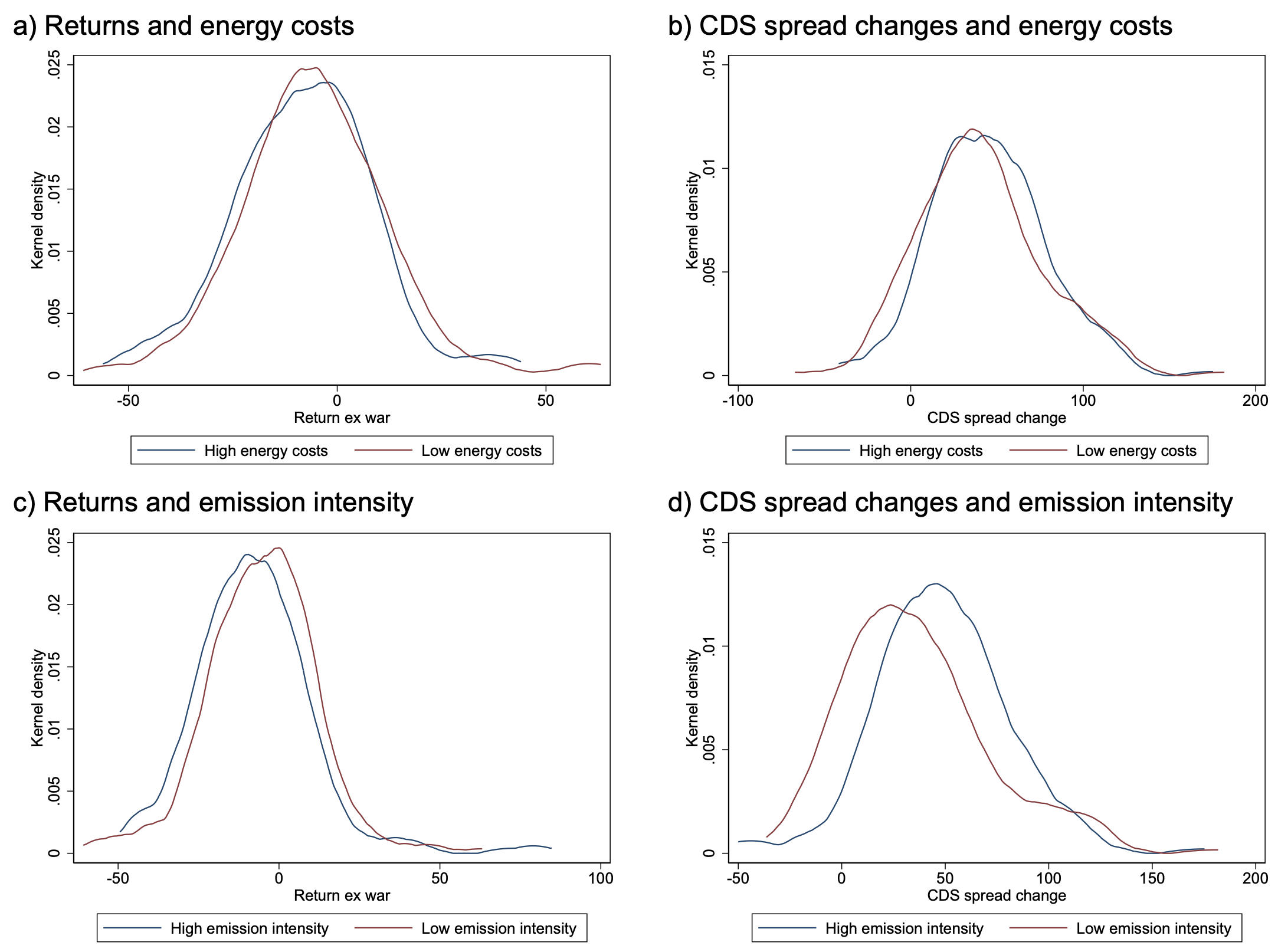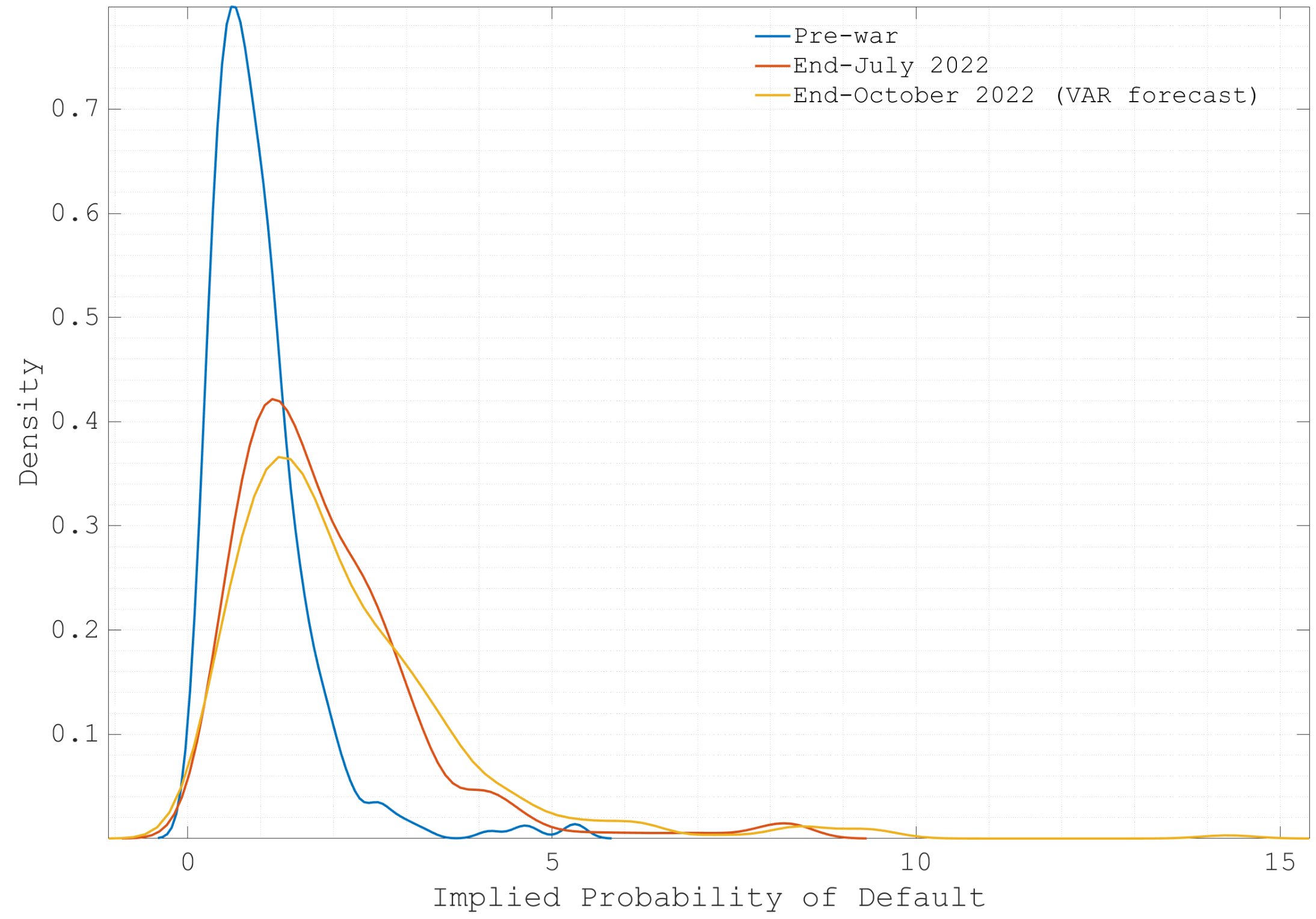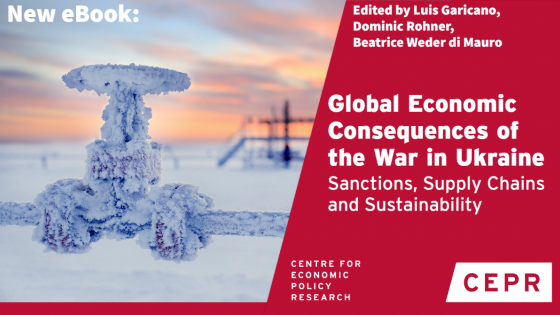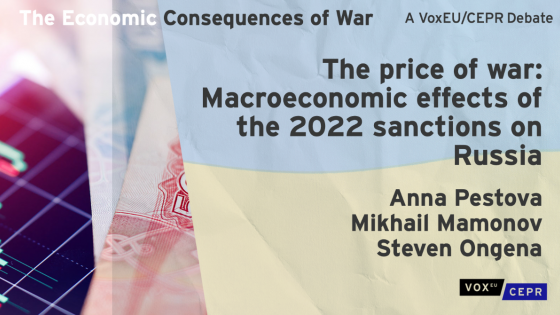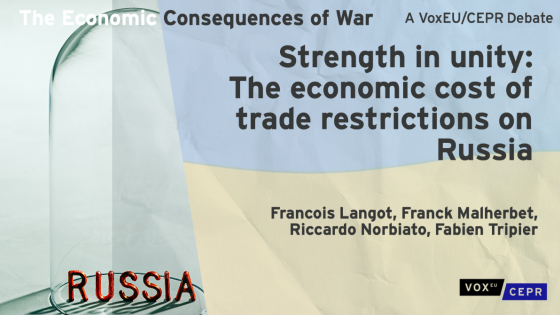Editors' note: This column is part of the Vox debate on the economic consequences of war.
Global energy prices have been steadily rising since mid-2021 as pent-up demand spurred by the post-pandemic recovery fuelled considerable tightness in the energy market. This dynamic was particularly pronounced in Europe where Russia’s invasion of Ukraine added unprecedented pressure to the European energy market: between 23 February, the day before the start of the conflict, and 31 July (27 September), European gas and electricity wholesale prices increased by 115% (109%) and 237% (138%), respectively. As the war escalated, prices tensions spread from the spot market to the whole term structure of futures energy prices, suggesting that the cost of energy will remain higher for longer.
Europe’s heavy reliance on energy imports from Russia explains the marked response of local energy prices to the war in Ukraine. In 2020, Russia accounted for around 29% of crude oil and 43% of natural gas imports into the EU, though dependence on Russian energy exhibits a large heterogeneity across member states, with countries in central and Eastern Europe, Germany, and Italy displaying the greatest reliance.
The war in Ukraine has spurred a prolific policy and academic debate spanning across multiple dimensions (Garicano et al. 2022). Most recent contributions concerning the economic implications have analysed how the war has exacerbated recession risks and inflation dynamics (Bachmann et al. 2022, Ferrara et al. 2022, Pestova et al. 2022), and amplified trade disruptions and supply bottlenecks (Borin et al. 2022, Langot et al. 2022). Micro-level evidence is still scarce and mostly reliant on event studies to quantify the impact of the Russian invasion on companies’ stock prices (Boungou and Yatié 2022, Boubaker et al. 2022).
In a recent work (Ferriani and Gazzani 2022), we contribute to the debate on the implications of the war in Ukraine on the European economy by assessing the impact of higher energy prices on the financial performance of European non-financial firms included in the Eurostoxx 600 index. The surge in energy costs induced by the war in Ukraine is significantly hitting European firms’ profits, increasing business risk, and even jeopardising entire production sectors, also by means of competitive disadvantages compared to countries with lower energy costs.
Exposure to the energy shock and firms’ financial performance
In Ferriani and Gazzani (2022), we show that the effects of the energy shock have already started to materialise in corporate asset prices, channelled via the extent of energy use in firms’ production functions. We propose two different proxies for firms’ financial performance: the equity returns since the start of the war and the change in 5 Year credit default swap (CDS) spreads.
We measure firms’ sensitivity to increased energy prices in terms of ‘energy intensity’, which is defined as energy expenditure normalised by total revenues. Alternatively, we proxy the sensitivity to the energy shock by ‘carbon emission intensity’, given by firms’ Scope 1 emissions scaled by the average equity market value in 2021. This second measure of exposure is of course correlated with energy use but may also capture the augmented costs that have to be paid when releasing carbon emissions and offer an indication of firms’ exposure to climate transition risk (Ilhan 2021, Bolton 2021).
We find a statistically significant negative correlation between firms’ financial performances since the beginning of the Ukraine war and their energy and emissions intensity. A 1 percentage point increase in energy intensity reduces the post-war company’s equity return by approximately 0.11 to 0.17 percentage points (depending on the model specification). Analogously a 1 percentage point increase in emissions (per market value) reduces the post-war company’s equity return by approximately 0.12 to 0.16 percentage points. Consistent evidence emerges when analysing the change in CDS spreads, but with opposite direction of the effect: in this case, firms with more energy use face a substantial increase in their solvency risk. From a graphical perspective, these results unfold from the distribution of firms’ returns and CDS spread variations as a function of energy and emission intensity. Companies more exposed to the energy shock have performed in general worse than their counterparts in which the incidence of energy costs is more contained.
Figure 1 Sensitivity to the energy shock and firms’ financial performance
Note: Authors’ computation based on Ferriani and Gazzani (2022). Kernel density of equity returns and CDS spread variations with respect to firms’ energy intensity (upper panel) and emission intensity (lower panel). Kernel density of equity returns (left plots) and CDS spread variation (right plots). High energy-cost firms have an energy intensity larger than the sample median, the opposite holds for low energy-cost firms. High emission-intensity firms have an emission intensity larger than the sample median, the opposite holds for low emission-intensity firms.
Implications of a sustained level of energy prices
We then turn to assessing the impact of a sustained period of high energy prices on firms’ financial soundness. To this purpose, we adopt a firm-level vector autoregression (VAR) model to produce forecasts of firms’ CDS spreads conditional on electricity prices. We estimate a weekly VAR model for each company, with the aggregate energy price as our exogenous variable, and the Eurostoxx and Vstoxx volatility indices as additional controls. We stress the corporate CDS spread by assuming that energy prices remain at the peak recorded in the last week of July for a period of three months.
The VAR-based CDS forecasts allow us to estimate that firms’ implied default probabilities would marginally increase over the next three months in aggregate terms, but, notably, the number of firms losing the investment-grade status would be non-negligible.
Figure 2 shows that the default risk has already markedly increased since the beginning of the war. In our scenario of stressed energy prices, there would be a further increase in insurance costs against rising default risk: implied default probabilities would rise on average from 1.85% at the end of July to 2.15% at the end of October. The shift to the right of the implied distribution of default probabilities does not appear dramatic, likely reflecting a deterioration of firms’ viability due to the energy shock already internalised in default probabilities. However, at the firm level, 71 firms out of 355 would record an implied default probability larger than 3%, the most affected industries being chemicals, food and staples retailing, machinery, metals and mining, real estate management and development, and automobiles.
As a comparison, the corresponding number of firms with an implied default probability larger than 3% was equal to 12 at the onset of the war and 45 at the end of July 2022.
Figure 2 Probability density functions of CDS-implied default probabilities
Note: Authors’ computation based on Ferriani and Gazzani (2022). Density functions extracted from corporate CDS spread at the onset of the war, at the end of July, and under a three-month stress test scenario (i.e. to end of October).
Conclusions
Our empirical analysis highlights that the dramatic energy shock induced by the war in Ukraine has already affected firms’ financial performances and may soon materialise in real terms. The channel we have identified may strengthen and hit European firms even more due to risks of sustained gas consumption during the incoming winter season, upward price pressures from global competition to secure liquified natural gas supplies and major supply disruption in Russian flows.
References
Bachmann, R, D Baqaee, C Bayer, M Kuhn, A Löschel, B Moll, A Peichl, K Pittel and M Schularick (2022), “What if? The economic effects for Germany of a stop of energy imports from Russia”, ECONtribute Policy Brief.
Bolton, P and M Kacperczyk (2021), “Do investors care about carbon risk?”, Journal of Financial Economics 142(2): 517–549.
Borin, A, F P Conteduca, E Di Stefano, V Gunnella, M Mancini and L Panon (2022), “Quantitative assessment of the economic impact of the trade disruptions following the Russian invasion of Ukraine”, Bank of Italy Occasional Papers.
Boubaker, S, J W Goodell, D K Pandey and V Kumari (2022), “Heterogeneous impacts of wars on global equity markets: Evidence from the invasion of Ukraine”, Finance Research Letters 48: 102934.
Boungou, W and A Yatié (2022), “The impact of the Ukraine–Russia war on world stock market returns”, Economics Letters 215: 110516.
Ferrara, L, M Mogliani and J Sahuc (2022), “High-frequency macroeconomic risk measures in the wake of the war in Ukraine”, VoxEU.org, 7 April.
Ferriani, F and A G Gazzani (2022), “The Impact of the War in Ukraine on Energy Prices: Consequences for Firms’ Financial Performance”, Working paper.
Garicano, L, D Rohner and B Weder di Mauro (2022), “The economic consequences of the Ukraine war: A new eBook”, VoxEU.org, 14 September.
Ilhan, E, Z Sautner and G Vilkov (2021), “Carbon tail risk”, The Review of Financial Studies 34(3): 1540–1571.
Langot, F, F Malherbet, R Norbiato and F Tripler (2022), “Strength in unity: The economic cost of trade restrictions on Russia”, VoxEU.org, 22 April.
Pestova, A, M Mamonov and S Ongena (2022), “The price of war: Macroeconomic effects of the 2022 sanctions on Russia”, VoxEU.org, 15 April.

